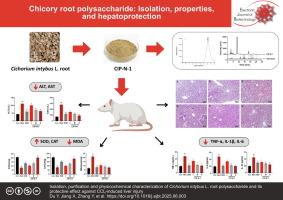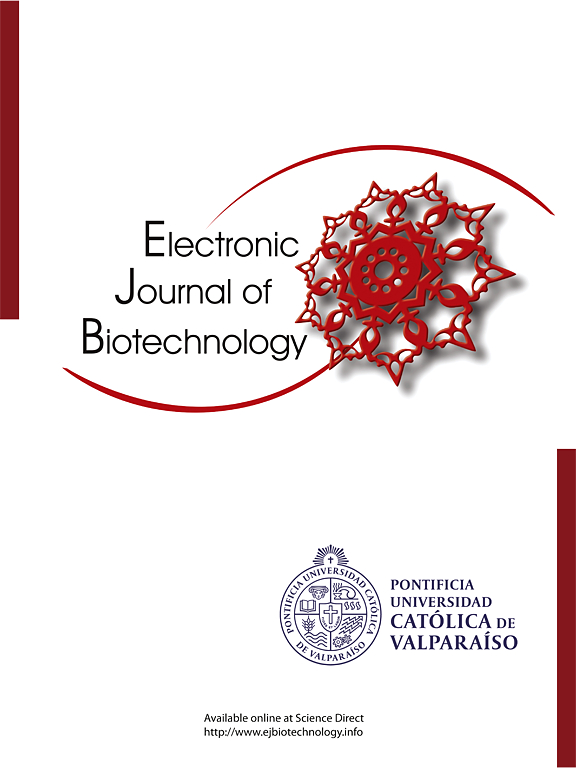Isolation, purification and physicochemical characterization of Cichorium intybus L. root polysaccharide and its protective effect against CCl4-induced liver injury
IF 2.5
4区 生物学
Q3 BIOTECHNOLOGY & APPLIED MICROBIOLOGY
引用次数: 0
Abstract
Background
Liver injury is a major cause of hepatic diseases, often leading to impaired liver function. Current treatments face limitations due to potential hepatotoxicity, driving interest in alternative therapies like Traditional Chinese Medicine (TCM). Cichorium intybus L., a medicinal herb rich in bioactive polysaccharides, has shown promise in liver protection.
Results
A water-soluble polysaccharide (CIP-N-1), with an average molecular weight of 2.3 kDa, was isolated and purified from the water extract of Cichorium intybus L. root using DEAE cellulose column chromatography and CL-6B agarose gel chromatography. CIP-N-1 consists of 98.16% neutral sugars and 1.69% proteins, with its primary components being mannose and glucose in a ratio of 4.9:95.1. In vivo studies demonstrated CIP-N-1′s hepatoprotective effects by enhancing antioxidant activity, inhibiting lipid peroxidation, and reducing inflammation in CCl4-induced liver injury.
Conclusions
CIP-N-1 shows potential as a dietary supplement for alleviating chemical liver damage. Its antioxidant and anti-inflammatory properties support its use in liver health, offering a natural therapeutic option for hepatic injury prevention and treatment.
How to cite: Ma Y, Yang Z, Huang W. Isolation, purification and physicochemical characterization of Cichorium intybus L. root polysaccharide and its protective effect against CCl4-induced liver injury. Electron J Biotechnol 2025;77. https://doi.org/10.1016/j.ejbt.2025.06.003.

菊苣根多糖的分离纯化、理化性质及其对ccl4致肝损伤的保护作用
背景肝损伤是肝脏疾病的主要原因,常导致肝功能受损。由于潜在的肝毒性,目前的治疗方法面临局限性,这促使人们对传统中医(TCM)等替代疗法产生兴趣。菊苣是一种富含生物活性多糖的中草药,具有保护肝脏的作用。结果采用DEAE纤维素柱层析和CL-6B琼脂糖凝胶层析,从菊苣根水提物中分离得到一种平均分子量为2.3 kDa的水溶性多糖(CIP-N-1)。CIP-N-1由98.16%的中性糖和1.69%的蛋白质组成,其主要成分是甘露糖和葡萄糖,比例为4.9:95.1。体内研究表明CIP-N-1通过增强抗氧化活性、抑制脂质过氧化和减少ccl4诱导的肝损伤的炎症来保护肝脏。结论scip - n -1具有减轻化学性肝损伤的作用。它的抗氧化和抗炎特性支持其在肝脏健康中的使用,为肝损伤的预防和治疗提供了一种天然的治疗选择。马勇,杨志,黄伟。菊苣根多糖的分离纯化、理化性质及其对ccl4致肝损伤的保护作用。中国生物医学工程学报(英文版);2009;77。https://doi.org/10.1016/j.ejbt.2025.06.003。
本文章由计算机程序翻译,如有差异,请以英文原文为准。
求助全文
约1分钟内获得全文
求助全文
来源期刊

Electronic Journal of Biotechnology
工程技术-生物工程与应用微生物
CiteScore
5.60
自引率
0.00%
发文量
50
审稿时长
2 months
期刊介绍:
Electronic Journal of Biotechnology is an international scientific electronic journal, which publishes papers from all areas related to Biotechnology. It covers from molecular biology and the chemistry of biological processes to aquatic and earth environmental aspects, computational applications, policy and ethical issues directly related to Biotechnology.
The journal provides an effective way to publish research and review articles and short communications, video material, animation sequences and 3D are also accepted to support and enhance articles. The articles will be examined by a scientific committee and anonymous evaluators and published every two months in HTML and PDF formats (January 15th , March 15th, May 15th, July 15th, September 15th, November 15th).
The following areas are covered in the Journal:
• Animal Biotechnology
• Biofilms
• Bioinformatics
• Biomedicine
• Biopolicies of International Cooperation
• Biosafety
• Biotechnology Industry
• Biotechnology of Human Disorders
• Chemical Engineering
• Environmental Biotechnology
• Food Biotechnology
• Marine Biotechnology
• Microbial Biotechnology
• Molecular Biology and Genetics
•Nanobiotechnology
• Omics
• Plant Biotechnology
• Process Biotechnology
• Process Chemistry and Technology
• Tissue Engineering
 求助内容:
求助内容: 应助结果提醒方式:
应助结果提醒方式:


